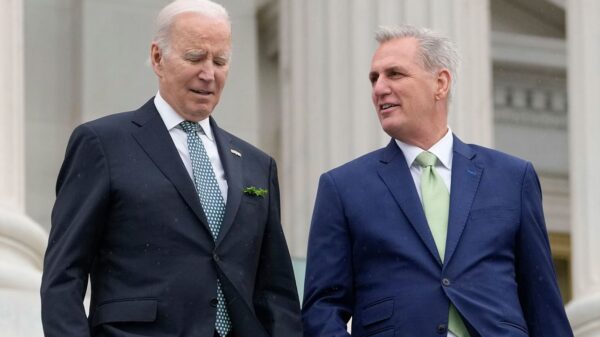(May 19, 2023) — U.S. lawmakers are in the midst of another debt-ceiling debate. Debates like these have become more common since the government came close to default during a 2011 crisis.
Debt-ceiling increases are unique to the United States, but they’re not new, at least not since World War I, when the U.S. government created the debt limit to make an easier process for borrowing money.
But most debt-ceiling increases aren’t crises. They happen quietly and easily. In the modern day debt-ceiling increases have become very common. In fact the government has increased or suspended the debt ceiling 78 times since 1960.
The difference this year is that lawmakers are actually talking about defaulting on payments, as was the concern in 2011. So far in the history of the United States, there has never been a default because the outcome is potentially catastrophic.
And there is not much time to waste.
Treasury Secretary Janet Yellen has repeatedly warned against stalling a debt-ceiling agreement any further, as the U.S. could run out of borrowing authority by June 1.
“We have learned from past debt limit impasses that waiting until the last minute to suspend or increase the debt limit can cause serious harm to business and consumer confidence, raise short-term borrowing costs for taxpayers, and negatively impact the credit rating of the United States,” she wrote in a letter to House Speaker Kevin McCarthy.
She went on, “If Congress fails to increase the debt limit, it would cause severe hardship to American families, harm our global leadership position, and raise questions about our ability to defend our national security interests.”
Why the Fight?
Most Democrats and Republicans agree that debt-ceiling increases are necessary to be able to pay what they have already spent. They also agree on the urgency of making a decision before June 1.
So why the fight?
The fight happens because of certain partisan policies that lawmakers like to tack onto debt-ceiling negotiations.
Negotiations this week have included spending caps, new work requirements for some benefit programs, and changes to energy permitting, as reported by Reuters. The must-pass legislation provides an opportunity to push in partisan policies, but it’s a dangerous game.
“Everybody uses [bills to increase] the debt ceiling for their favorite policies,” said Maya MacGuineas, the president of the Committee for a Responsible Federal Budget. “The real problem here is that you now have people actually talking about defaulting.”
Debt Ceiling Talks in the U.S. This Week
Currently the Republican-controlled House, led by Speaker McCarthy, is fighting for government spending cuts. “We can raise the debt ceiling if we limit what we’re going to spend in the future,” McCarthy told reporters.
Earlier in the week the parties disagreed on whether they are making progress.
“I really think there’s a desire on their part, as well as ours, to reach an agreement, and I think we’ll be able to do it,” Biden told reporters Sunday in Delaware.
McCarthy, on the other hand, told NBC News on Monday, “I still think we’re far apart. It doesn’t seem to me yet that they want a deal.”
On Thursday both President Biden and Speaker McCarthy were confident about a compromise. But their confidence is raising alarm for members of both parties, who hope their leaders haven’t sacrificed too much to reach a deal.
Unfortunately talks were stalled on Friday with negotiators saying they just weren’t making any productive progress.
“We’re not there,” said Representatives Garret Graves of Louisiana, the lead negotiator for the House Republicans. “We’ve decided to press pause, because it’s just not productive.”
President Biden, who is away on a Group of Seven summit in Japan, will be returning early from what was supposed to be a week-long trip. He will return on Sunday with a week and a half to resolve ongoing debt ceiling negotiations before the June 1 deadline.
– The Byway
Feature image caption: President Biden and Speaker McCarthy walk out of the St. Patrick’s Day dinner together. Courtesy Alex Brandon/AP.

